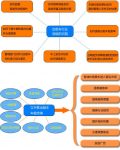
Liyutai Taxi Management Vehicle Terminal Solution
[ad_1]
1. Project background
With the changes of the times, people’s quality of life continues to improve, their pace of life is also accelerating, their dependence on and demand for transportation are also increasing, and the number of urban taxis has increased rapidly in recent years. According to statistics from the Ministry of Transport, in 2013, the number of taxis in my country reached 10,370,61, a year-on-year increase of 1.24%. The size of the taxi market is expected to reach 1.35 million in 2017. As an important part of the arteries of urban transportation development, taxis play an extremely critical role in urban transportation. Taxi is regarded as the “window” of a city, which carries the civilization of a city and affects the image of a city. How to solve the various problems faced by the taxi industry and how to improve the overall service level of the taxi industry has become the primary problem that the management department needs to solve. At present, the ineffective industry management has brought about various problems and ills: illegal operation, high no-load rate, traffic congestion, high cost, poor real-time performance, scattered scheduling, waste of resources, and hindered industry development. Vicious cases such as rental robbery and killing of drivers have occurred from time to time, causing serious threats to the personal and property safety of drivers. The taxi industry urgently needs an efficient and safe high-tech management system to ensure the healthy and sustainable development of the taxi industry!

Taxi vehicle terminal
2. Design plan

(Frames)
The overall framework is composed of application layer, data layer, network layer and terminal layer.
Application layer: Mainly for operation management departments and dispatch centers.
Data layer: The data center is the gathering point of all information, composed of databases, communication servers and external interfaces. All application systems share the data and resources of the data center.
Network layer: It is composed of GPRS wireless communication network and wired network. The GPRS network transmits vehicle location information, driver information, and supervision data to the management center, and the wired network transmits video or images to the data center.
Terminal layer: real-time data generated by taxi-specific on-board terminals, IC card swiping information, vehicle location information, etc., and transmitted to the management department data center through wireless or wired networks.
3. Hardware solution
In response to the guiding ideology of the “Opinions on Further Strengthening the Management of the Urban Taxi Industry” of the General Office of the State Council, and to promote the standardized management and stable development of the taxi industry, Liyutai Electronics has launched an Android video surveillance vehicle-mounted intelligent terminal solution, which integrates fingerprint recognition. Card swiping function, real-time vehicle positioning and monitoring, 3G/4G wireless transmission, real-time call, with functions such as on-call service, driver information display, and service evaluation.

(LACZ-702D smart driving training vehicle terminal details)
Fourth, the program effect
Competition in the car rental industry is intensifying. In the era of mobile Internet, user experience and offline services have become long-term considerations for enterprises and must continue to inject competitiveness. The installation of on-board terminals for taxi management is an inevitable trend for the development of future taxis in the direction of electronics, intelligence, networking, energy conservation and environmental protection. Liyutai Taxi Management Vehicle Terminal integrates all the functions of traditional GPS and vehicle DVR, and also expands the 3G video transmission function. It can meet the instant communication needs of dispatch centers and vehicles.
Installing Liyutai Taxi Management Vehicle Terminal can achieve the following effects:
1. Electronic map
Through the display of the electronic map, the management department or dispatch center can intuitively understand the overall distribution of taxis, and make reasonable dispatches to reduce the empty-load rate of taxis and improve resource utilization.
2. Car phone
The terminal is equipped with a “car phone” function, and the dispatch center can remotely “call” taxis to improve the efficiency of passenger car rental, increase passenger satisfaction, and enhance the image of the city.
3. IC card function
The IC card function is added, which can display the taxi driver’s name, license plate number, job number, supervisory phone number and other information on the terminal display. Realize the identity of the driver.
4. Vehicle running status display
The vehicle display board will display the status of “empty”, “heavy”, “call”, “pause”, etc., so that passengers can see the status of the vehicle at a glance.
5. GPS positioning function and Android operating system
Satellite positioning and the Android operating system can flexibly support call-hailing, support network operation platforms such as Didi/kuaidi taxi, and improve the efficiency of taxi operation.
6. Video surveillance
Retrieve live video at any time, which can be used for spot check and supervision, and it can also play a role in handling security incidents. The storage of video recordings provides effective measures for the construction of a safe city and provides powerful assistance for the investigation of public security cases.
7. Track playback
Track playback, reproduce the driving path of the taxi, and combat malicious detours by drivers without professional ethics.
8. Service Evaluation
Passengers can evaluate the taxi driver’s service attitude, which can effectively improve the driver’s service quality.
9. Advertising
The terminal is equipped with a true-color LCD screen, touch screen, and voice broadcast function, and can place advertisements.
10. Manual alarm
It can be connected to the alarm signal. Once an emergency occurs, the driver can press the alarm switch. When the dispatch center receives an alarm signal, it will automatically call the police and automatically retrieve the 3G video of the vehicle. Get the latest developments on site directly.
11. Remote maintenance of equipment
The device can perform various operations such as remote upgrade, setting, querying parameters, and resetting. Many maintenance tasks can be completed remotely, greatly reducing the maintenance workload.
Liyutai Taxi Management Vehicle Terminal is applied to the taxi industry, which can enable the taxi industry to better serve the citizens, effectively protect the legitimate rights and interests of consumers, and greatly improve the image of the city and promote the healthy and orderly development of the taxi industry. s help.
[ad_2]




